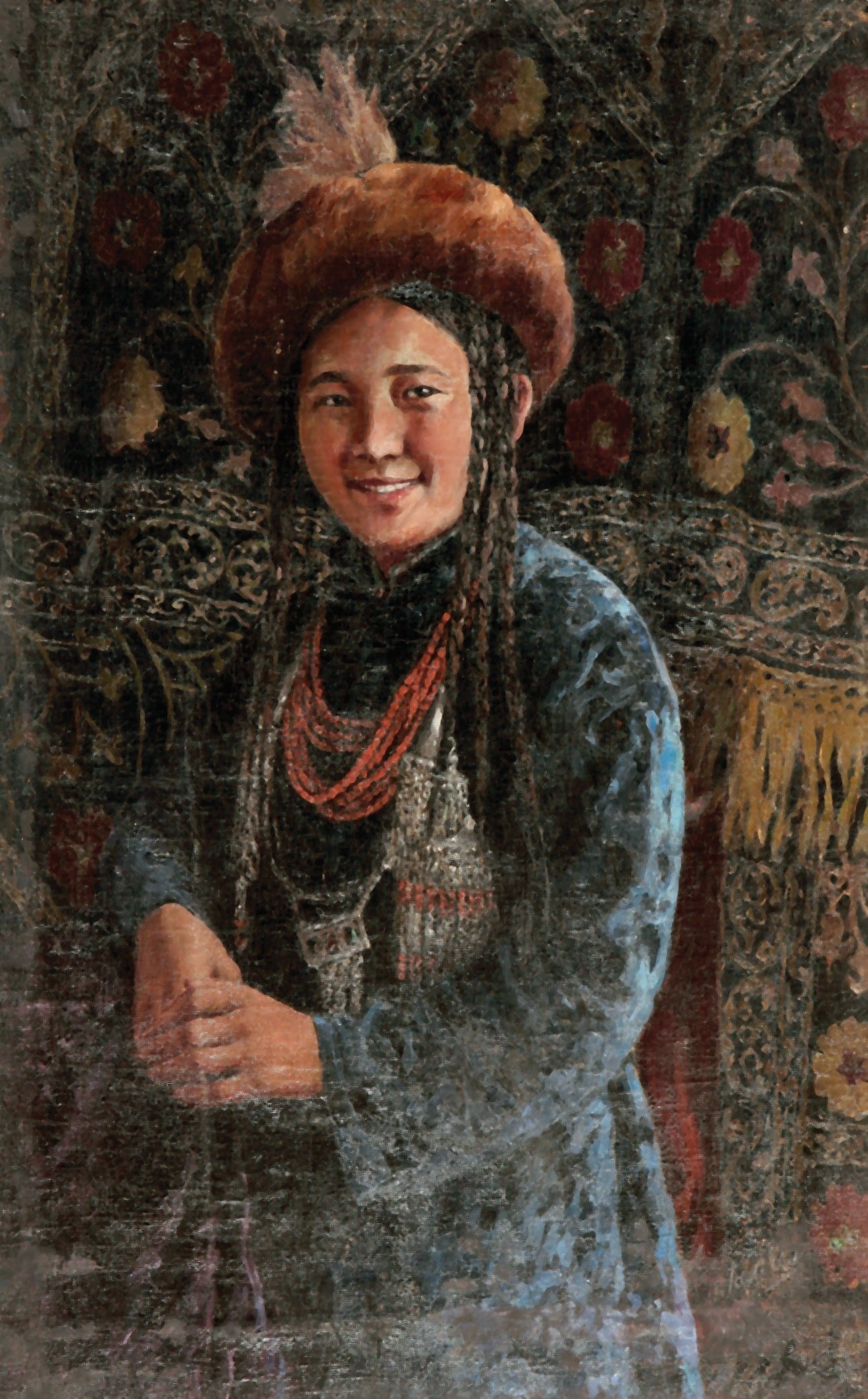The Development of Kazakh Art of the 20th Century
The realm of professional visual art in Kazakhstan stands as a veritable treasure, painstakingly crafted over the course of the last seven decades of the 20th century. This enchanting journey through Kazakhstan's artistic heritage unfurled during a time of profound transformation as the nation embarked on a journey towards a European-inspired cultural and economic development model.
READ MORE
Colours of the Steppe: Symbolism and Imagery in Kazakhstan Art
A Brief History of Kazakhstan's Fine Art Evolution
Kazakhstan's Ancient Art: A Journey Through Time and Culture
Unlocking the Treasures of Kazakh Art: A Journey Through the 20th Century
Unknown artist, Portrait of a Girl, 1930, Almaty.
The professional visual art of Kazakhstan stands as a remarkable treasure, meticulously crafted over the past seven decades of the 20th century. This captivating journey into Kazakhstan's artistic heritage began during significant change as the nation transitioned towards a European-inspired cultural and economic development model.
Before the October Socialist Revolution, Kazakh artistic expression was intricately intertwined with material culture, artistic craftsmanship, and religious traditions, reflecting a nomadic way of life. However, as the 19th century drew to a close, this traditional paradigm became outdated, and the revolution hastened the transition to a more settled lifestyle.
The Soviet authorities took proactive measures by introducing new institutions, laying the foundation for the country's development in line with the evolving demands of the era. This period witnessed the establishment of educational institutions, industrialisation initiatives, research endeavours, and creative organisations, which collectively nurtured a flourishing environment for professional intellectual art.
The pivotal moment arrived in the 1930s when Kazakhstan witnessed the emergence of scientific, medical, educational, and creative institutions that had previously been absent. In art, the Soviet Artists Committee in Almaty, founded in 1933, played a pivotal role in uniting artists across the republic and fostering artistic development.
In 1934, a significant milestone was achieved with the inaugural exhibition of Kazakh artists at the State Museum of Eastern Cultures in Moscow. This event marked the dawn of a new era in the region's art scene. Simultaneously, the Kazakh State Art Gallery was established in Almaty, named after T. Shevchenko. Russian artists with academic backgrounds made noteworthy contributions to the development of Kazakh art. Renowned figures such as sculptor N. Ponomarev, graphic artists G. Brylov and B. Chekalin, and painters A. Rittikh and N. Krutilnikov left an indelible mark on its history. Alongside these luminaries, the names of the first Kazakh artists, Abylkhan Kasteyev and Aubakir Ismailov, began to ascend.
A notable figure in this narrative is N. Khudov, a non-professional artist who had resided in Kazakhstan since 1878. His drawings, created during expeditions of the Russian Geographical Society, became invaluable sources of information about the nature and culture of the Kazakhs. These works laid the foundation for the first paintings that faithfully portrayed various aspects of traditional life. In 1920, Abylkhan Kasteyev, the first Kazakh artist, embarked on his creative journey in Khudov's studio. Boldly bridging the chasm between the new way of life and traditional heritage, Kasteyev became the pioneer of the national art school. His works exuded the joy of exploring the world and the freedom of expression, introducing a hitherto unknown language of art. This marked the genesis of a new art school primarily centred around painting.
Kasteyev Abylkhan. 1904-1973. Almaty. View on holiday house of CPC in Medeo. 1937
Drawing inspiration from nomadic culture, Russian artists crafted distinctive works that melded ethnic motifs with artistic expressiveness. The inception of the first travelling exhibition, organised by N. Krutilnikov in 1928, played a significant role in the development of Kazakh art. This exhibition traversed great distances to reach the then capital of Kazakhstan, Kyzylorda, and received a congratulatory telegram from A. V. Lunacharsky. This unique cultural event brought together artists from different cities, showcasing their works and introducing native residents to the art world. These artists' ardent enthusiasm and initiative made all of this possible.
Today, Kazakh art continues to evolve and serves as a wellspring of inspiration for collectors and art enthusiasts worldwide. It mirrors the zeitgeist and symbolises the nation's progress. It embodies a rich legacy and constitutes a distinctive element of the global artistic spectrum. We cordially invite you to delve into this extraordinary realm of art, where tradition harmoniously converges with modernity and cultural heritage melds with innovation.
FAQ (Frequently Asked Questions)
What sets Kazakhstan art apart from other artistic traditions?
Kazakhstan's art stands out due to its unique blend of cultural influences, particularly emphasising the nation's nomadic heritage. This fusion of ethnic motifs and artistic expression makes it a distinct and captivating artistic tradition.
Who are some notable artists in Kazakhstan's art history?
Prominent figures in Kazakhstan's art history include A. Kasteyev, A. Ismailov, N. Ponomarev, G. Brylov, B. Chekalin, A. Rittikh, and N. Krutilnikov, among others. These artists have played pivotal roles in shaping the nation's artistic identity.
What are the main themes and subjects explored in Kazakhstan's art?
Kazakhstan's art frequently explores themes rooted in the country's rich cultural heritage, such as nomadic life, nature, and traditions. Additionally, artists often incorporate elements of modernity and innovation into their works.
How has the evolution of art in Kazakhstan unfolded over time, especially in contemporary times?
The evolution of art in Kazakhstan has been significant, reflecting changing times and global influences. It continues to adapt to contemporary artistic trends while preserving its cultural roots, making it a dynamic and vibrant art scene.
This post reflects our views only. We accept no liability for its content. No legal action can be taken against us based on this information. Use at your own risk.



